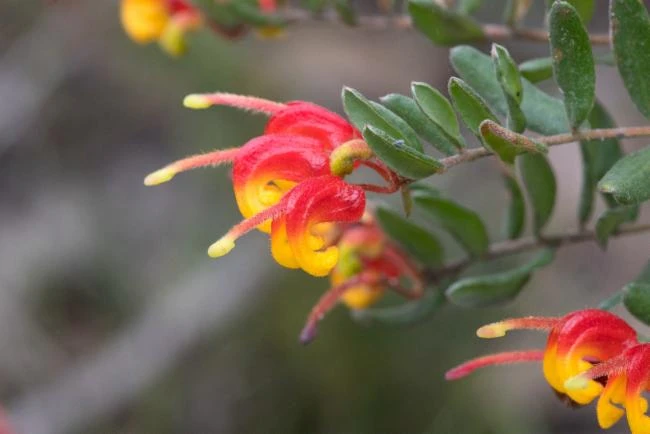Mountain Grevillea
(Grevillea alpina)
Mountain Grevillea (Grevillea alpina)
/
/

Kym Nicolson
CC BY 4.0
Image By:
Kym Nicolson
Recorded By:
Copyright:
CC BY 4.0
Copyright Notice:
Photo by: Kym Nicolson | License Type: CC BY 4.0 | License URL: http://creativecommons.org/licenses/by/4.0/ | Occurence ID: https://www.gbif.org/occurrence/1937469892 | Publisher: Atlas of Living Australia |
































Estimated Native Range
Climate Requirements for Leicester, United Kingdom
| This Plant | Your Site | Plant Suitability for Your Location | ||
|---|---|---|---|---|
| • Precipitation | 7" - 60" | 24" | You should be able to grow this plant with no additional irrigation. | Excellent |
| • High Temp. | 65°F - 101°F | 72°F | Your summer temperatures are normal for this plant. | Excellent |
| • Low Temp. | 23°F - 47°F | 34°F | Your winter temperatures are normal for this plant | Excellent |
This plant should grow very well at your location without additional irrigation.
Summary
Grevillea alpina, commonly known as Mountain Grevillea, is an evergreen shrub native to dry sclerophyll forests and woodland areas in Eastern Australia. It exhibits considerable variation in form, ranging from prostrate to upright, and can reach heights between 0.3 and 2 meters (0.98 and 6.56 ft). The leaves are typically narrow and linear, adding to the plant’s fine-textured appearance. Flower color is highly variable, with the perianth displaying shades of red, orange, pink, and more rarely yellow or cream. The flowers are particularly showy from August to December, attracting a variety of nectar-feeding insects and birds.
Mountain Grevillea is valued for its vibrant flowers and ability to attract wildlife. It is often used in gardens for rockeries, informal hedges, and as a specimen plant. The species is known for being somewhat short-lived, especially in humid climates with summer rainfall, but this issue can be mitigated by grafting onto suitable rootstocks. It thrives in dry conditions and requires well-drained soils, making it suitable for xeriscaping. Regular pruning promotes a denser habit and reduces woodiness. While it can be propagated from pre-treated seed, garden-sourced seeds may result in hybrid offspring. For optimal growth, Mountain Grevillea prefers full sun and low water once established.CC BY-SA 4.0
Mountain Grevillea is valued for its vibrant flowers and ability to attract wildlife. It is often used in gardens for rockeries, informal hedges, and as a specimen plant. The species is known for being somewhat short-lived, especially in humid climates with summer rainfall, but this issue can be mitigated by grafting onto suitable rootstocks. It thrives in dry conditions and requires well-drained soils, making it suitable for xeriscaping. Regular pruning promotes a denser habit and reduces woodiness. While it can be propagated from pre-treated seed, garden-sourced seeds may result in hybrid offspring. For optimal growth, Mountain Grevillea prefers full sun and low water once established.CC BY-SA 4.0
Plant Description
- Plant Type: Shrub
- Height: 0.9-12 feet
- Width: 1.5-9 feet
- Growth Rate: Moderate
- Flower Color: Red, Orange, Yellow
- Flowering Season: Winter, Spring, Summer
- Leaf Retention: Evergreen
Growth Requirements
- Sun: Full Sun
- Water: Low
- Drainage: Fast
Common Uses
Bee Garden, Bird Garden, Butterfly Garden, Drought Tolerant, Fragrant, Groundcover, Hummingbird Garden, Low Maintenance, Salt Tolerant, Showy Flowers, Street Planting
Natural Habitat
Native to dry sclerophyll forests and woodland areas in Eastern Australia
Other Names
Common Names:
Scientific Names: Grevillea alpina, Grevillea alpestris, Grevillea dallachiana, Grevillea alpestris var. helianthemifolia, Grevillea alpina var. aurea, Grevillea alpina var. dallachiana, Hakea alpina
GBIF Accepted Name: Grevillea alpina Lindl.